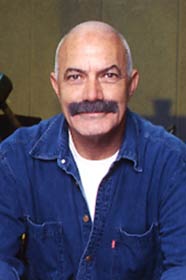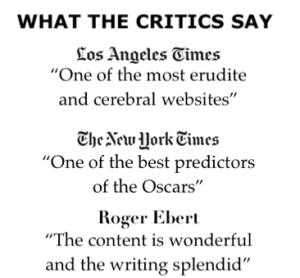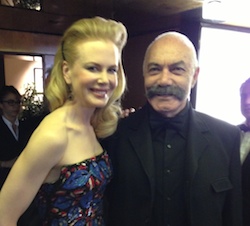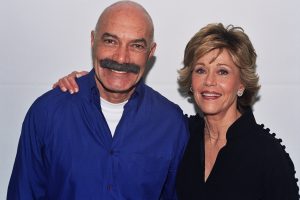At least two notches above Batman Begins, this follow-up represents Christopher Nolan’s most accomplished and mature work, and mind you, he is one of the few Hollywood directors who have never made a bad picture.
Celebrating his first decade as a filmmaker, from the short, small-budget and modest noir” Following,” through the clever and witty post-modernist noir “Memento,” through the well-acted and skillfully shot “Insomnia,” through the visual extravaganza of “The Prestige,” Nolan has continued to sharpen his skills and now works at the top of his form. He is a unique director for whom bigger scale, larger budget, and more polished state-of-the-art special effects translate into all-around better picture; for most directors, it’s usually the other way round.
Three days after the screening, I am still haunted by some visual images; lines of cynical dialogue, particularly by the sinister Joker, splendidly and scarily played by Heath Ledger, who should receive a posthumous Oscar nomination, if not the award itself (See Oscar Alert).
In his dark, macabre humor and malevolent nature, Ledger goes way beyond the Joker that Jack Nicholson magnificently played in the first “Batman” (1989). Consider the line, “You either die a hero, or live long enough to become a villain,” which is repeated several times and serves as the film’s motto.
Of all the Batman movies, including the first four, singly and jointly made by Tim Burton and Joel Schumacher, “Dark Knight” is the most technically impressive and the most resonant in tone, a picture that’s in tune with the fear and paranoid that prevail in our society in the post 9/11 era.
Richer in text, characterization, and subtext, the follow-up to “Batman Begins” reunites director and co-writer Christopher Nolan with star Christian Bale, who reprises the role of Bruce Wayne/Batman, and with Michael Caine and Morgan Freeman, as his loyal team members.
As writers, Jonathan and Christopher Nolan, whose scenario is based on a story by Nolan and David S. Goyer, the brothers have doubled the number of major personae to include Lieutenant Jim Gordon (Gary Oldman) and the committed new District Attorney Harvey Dent (Aaron Eckhart), both of whom try to help Batman fight and destroy organized crime in Gotham City. In a shrewd piece of casting, the filmmakers have chosen Maggie Gyllenhaal to play the only significant female role, Rachel Dawes, who in the first film was rather pallid in Katie Holmes’ interpretation.
The organizing principle of the narrative is that of the triangle, or triad, to use a sociological concept. There are at least four significant triads. First, there is Wayne-Batman/Alfred Pennyworth/Lucius Fox, then there is the romantic triangle of Wayne-Batman/Harvey Dent/Rachel Dawes, but arguably, the most intriguing one is that of Wayne-Batman/the Joker/Jim Gordon.
The “good” triumvirate of officers initially proves to be effective, but they soon find themselves prey to a rising criminal mastermind known as the Joker, who thrusts Gotham into anarchy and forces the Dark Knight ever closer to crossing the fine line between good and evil, between being a decent hero and a cruel vigilante.
The “bad,” largely crime figures also form a triangle, headed by the Joker and including Naroni (played by Eric Roberts in a comeback performance), as one of the heads of the city’s crime cartel, and Lau (Chin Han), an Asian business mogul.
Almost each character has two sides and/or experiences inner conflict. This is particularly the case of Harvey Dent, the newly elected District Attorney, who begins as Gotham’s White Knight and transforms into Two-Face, a horribly deformed man obsessively driven by one goal, revenge, which makes him closer (sort of a kindred spirit) to the Joker.
Thematically, Nolan’s two “Batman” movies could not have been more different. With “Batman Begins,” he opened a new chapter in the franchise by taking the legendary character back to his origins, re-imagining why and how the billionaire industrialist Bruce Wayne became the enigmatic crime fighter known to the world as Batman. In contrast, in the far more interesting “Dark Knight,” Nolan returns to the Batman saga with the central character now fully formed. The end of “Batman Begins,” which was more psychologistic and verbose, suggested a promising direction in which the franchise could continue, which the new movie does with full gusto.
The new tale focuses on how Batman’s very existence has changed Gotham, initially not necessarily for the better. The 2005 film hinted at the threat of escalation, that in going after the city’s crime cartels and attacking their interests, Batman could provoke an even greater response from the criminal community. In other words, there are negative consequences of his crusade brewing in Gotham City, which he brings to the surface both advertently and inadvertently, thus blurring the line between absolute good and absolute evil. As a result, the new tale is more complex, the morality more ambiguous, with many shades of gray that define both “heroes” and villains.”
Exploration of identity formation and evolution is a recurring theme in all of Nolan’s work, and here it gets a particularly intriguing treatment. While Batman has begun to rid Gotham of the crime and corruption that has plagued the city, ironically, the vacuum he created now attracts even more powerful criminal elements, which perceive it as their chance to take over the city’s no man’s land.
The Nolans have shrewdly reversed the relation and symmetry between the two facets of their hero. If the first film concentrated on the origins of the character, how Batman evolved out of Bruce Wayne’s early traumas, fears, anger, and resolve to fight crime and corruption, in “Dark Knight,” Batman has become a celeb, well-known to the city’s police and citizens. While some consider him a hero, others wonder whether he’s doing more harm than good. The arrival of a new kind of criminal raises the stakes on that debate–there are new enemies to protect the city from.
The billionaire playboy Wayne–with his fabulous cars, beautiful women, and nonchalant attitude–is no longer who this man really is. While Wayne wears a mask to hide his identity as Batman, it’s actually Batman who defines Bruce’s true identity, and Wayne’s public persona is the “mask” he wears to co-exist. Initially, you may recall, Wayne thought he would serve as inspiration to Gotham and would eventually be able to leave his savior character behind. But in this version, he’s beginning to absorb the new, harsher reality that this is not something he can easily walk away from-now or possibly ever.
The story’s most dangerous enemy is Batman’s infamous nemesis, the Joker, the maniacal, remorseless fiend. In this tale, the Joker is the ultimate arch-villain, as much an icon as the Dark Knight is, presenting the filmmakers the challenge to exploring an utterly perverse character with a distorted point of view (actually more of a philosophy of life). Perhaps following the tradition of villains in German expressionist cinema, this Joker represents the most extreme form of anarchist, a force of chaos, a purposeless criminal who is not motivated by money and greed; in one the film’s most disturbing scenes, he burs down a mountain of cash. A massively destructive force, he is truly unsettling, appearing out of nowhere, when he is least expected and taking great delight in his murderous nature.
As interpreted by the inventive actor Heath Ledger (in his last screen role), the Joker is colorful, outrageous, and dangerous, devoted the spectacle and excess for their own sake. Ledger throws himself completely, in looks, body, and soul to the exploration of the multiple effects he can have as a solitary figure on the entire population, the scary ways in which he upsets the social order, the specific means he uses to take the citizens’ rules, values, ethics, and humanity and turn them on themselves.
Bent on destruction for destruction’s sake, including at a later point self-destruction, the Joker is a man devoid of any norms or principles, a formidable foe defined by total lack of morality. This element posits the Joker in direct opposition to Batman, a man who has a very strict moral code for what he will and will not do, which the Joker uses to his own selfish advantage. Under the Joker’s escalating influence, though, Batman needs to reassess his philosophy, make sure that in chasing an ultra monster, he doesn’t succumb to the temptation of becoming a monster himself. The movie asks, where do you draw the limits in fighting evil and corruption, what’s the line dividing the possession of power and using it and the aspiration to power, which defines some of the other characters.
In terms of visuals, sounds, and tunes, “Dark Knight” is a supremely mounted roller coaster ride, defined by some of the most spectacular set pieces to be seen in American actioners in years. Not surprisingly, half a dozen of them are encounters between the Joker and Batman, or the Joker and the other criminals.
In this picture, Batman’s pursuit of justice also takes him on an odyssey halfway across the world to Hong Kong, in a visually stunning sequence, which marks the first time that the Caped Crusader has left the confines of Gotham City.
The execution benefits from Nolan’s collaboration with a top-notch behind-the-scenes creative team, including two-time Oscar-nominated director of photography Wally Pfister (“The Prestige,” “Batman Begins”), Oscar-nominated production designer Nathan Crowley (“The Prestige”), Oscar-nominated editor Lee Smith (“Master and Commander: The Far Side of the World”) and Oscar-winning costume designer Lindy Hemming (“Topsy-Turvy”).
The haunting music, that would make Bernard Herrmann proud, is composed by Oscar winner and multiple Oscar nominee Hans Zimmer (“The Lion King,” “Gladiator”) and seven-time Oscar nominee James Newton Howard (“Michael Clayton,” “The Fugitive”), who previously collaborated on the score for “Batman Begins.”
Technically speaking, six sequences of “The Dark Knight” were filmed with IMAX cameras, including the opening six minutes, which represent bravura filmmaking. This marks the first time ever that a major feature film has been even partially shot using IMAX cameras, in what is an intriguing integration of the two formats.
Space doesn’t permit me to dwell on the inventive redesign of the legendary Batmobile, which appeared in “Batman Begins,” and the introduction of the brand new Bat-Pod, an exotic, high-powered, heavily armed two-wheeled machine, which is not a motorcycle and is capable of handling any kind of terrain. Well outfitted, it has monster truck tires and is equipped with weapons on both sides: 40mm blast cannons, 50-caliber machine guns, and grapping hook launchers. Featured prominently in the climactic chase scene, it’s a bravura sight to behold.
End Note
“The Dark Knight” is based upon characters appearing in comic books published by DC Comics. “Batman” was created by Bob Kane.
The IMAX Experience will appear in IMAX DMR (letterbox), while scenes shot with IMAX cameras on 15/70mm film will expand vertically to fill the entire IMAX screen, which can be up to eight stories tall, for an all-encompassing movie-going experience.
Cast
Bruce Wayne – Christian Bale
Joker – Heath Ledger
Harvey Dent – Aaron Eckhart
Alfred – Michael Caine
Rachel – Maggie Gyllenhaal
Gordon – Gary Oldman
Lucius Fox – Morgan Freeman
Credits
A Warner Bros. release, presented in association with Legendary Pictures, of a Syncopy production. Produced by Emma Thomas, Charles Roven, Christopher Nolan. Executive producers, Benjamin Melniker, Michael E. Uslan, Kevin De La Noy, Thomas Tull. Directed by Christopher Nolan. Screenplay, Jonathan Nolan, Christopher Nolan; story, Christopher Nolan, David S. Goyer, based upon characters appearing in comicbooks published by DC Comics, “Batman” created by Bob Kane. Camera: Wally Pfister. Edtor, Lee Smith. Music, Hans Zimmer, James Newton Howard. Prduction designer, Nathan Crowley; supervising art directors, Kevin Kavanaugh, Simon Lamont; art directors, Mark Bartholomew, James Hambidge, Craig Jackson, Steven Lawrence, Naaman Marshall; set decorator, Peter Lando. Costume designer, Lindy Hemming. Sound, Ed Novick; sound designer/supervising sound editor, Richard King; re-recording mixers, Lora Hirschberg, Gary Rizzo. Visual effects supervisor, Nick Davis; visual effects, Double Negative, Framestore, Buf Compagnie, Cinesite (Europe). Special effects supervisor, Chris Corbould; miniature effects and photography, New Deal Studios. Stunt coordinators, Paul Jennings, Rick LeFevour, Tom Struthers.
MPAA Rating: PG-13. Running time: 152 Minutes.










